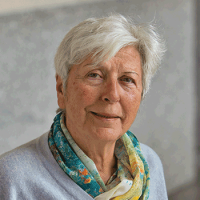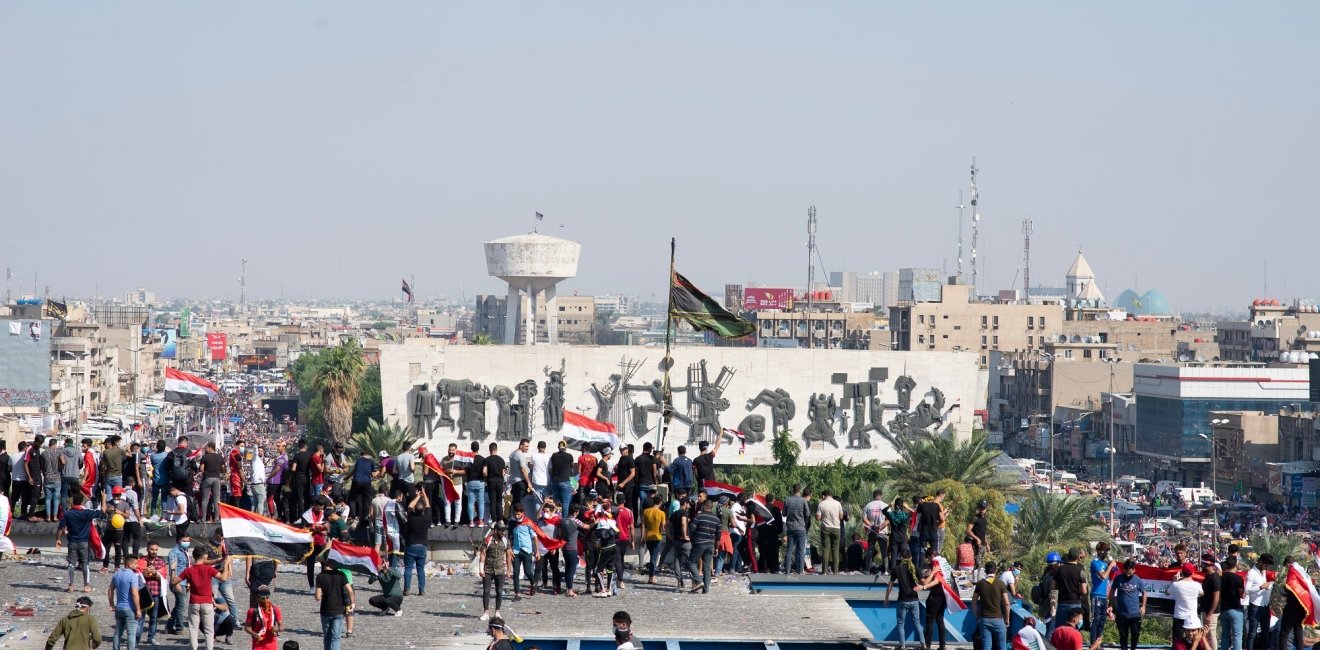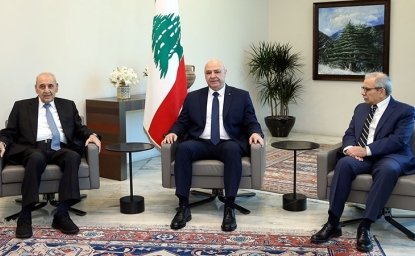The only easy part of U.S. policy toward Iraq since 2003 was the defeat of Saddam Hussein. From there on the policy stumbled through a series of difficulties, setbacks and blunders. The killing on Iraqi soil of al-Quds Force Commander Qassem Soleimani on January 3 by the United States had made a difficult puzzle nearly unsolvable. Both the domestic situation in Iraq and a fickle U.S. policy based on faulty assumptions have contributed to this state of affairs.
The Many Iraqs
The problem in formulating a policy toward Iraq is that in reality there are several Iraqs, not just one. There is the American Iraq, created by the U.S. occupation; the Iraq created by Iran’s presence inside many Iraqi organizations, including militias and political parties; the federal or even confederal Iraq the Kurds have long advocated and appears to be gaining traction again in other parts of the country; there is the more democratic and less corrupt Iraq protesters have been demanding in the streets for over four month; finally, there is the new Islamic state that ISIS sought to create on territory taken from both Iraq and Syria, a caliphate governed by sharia in its most vicious interpretation—largely defeated at present, but not necessarily dead forever. All these different Iraqs have both domestic and external supporters and advocates.
The problem in formulating a policy toward Iraq is that in reality there are several Iraqs, not just one.
The American Iraq
The Iraq the U.S. occupation set up is the one officially in control of the country. The United States shaped the constitution, the institutions and the election process. The political class of Iraq as it is today emerged or consolidated within the system and is now playing the election game the system requires them to play. Although shaped by the U.S. presence, much of the political class does not support a continued for Washington. In fact, within days of Soleimani’s assassination the Iraqi parliament approved a resolution demanding the withdrawal of US troops. It is true that only Shia members of parliament were present when the resolution was unanimously approved, but it is equally true that no Sunni or Kurdish MP dared to cast a vote supporting the continued American presence. The government of Prime Minister Adel Abdul Mahdi, who is acting in a caretaker capacity after being forced to resign after months of street protests, is doing its best to sit on the fence, neither implementing nor contesting the parliament’s resolution, but it will not be able to do so indefinitely.
The Iranian Iraq
While US supporters are cautious and silent, Iran’s are quite vocal. Most importantly, they are organized. There was a large and seemingly spontaneous outpouring of grief following Soleimani’s death, but a demonstration that brought some 200,000-250,000 people into the streets in Baghdad on January 25 was organized by Shia cleric Moqtada al-Sadr, a firebrand populist with an ambiguous relationship with Iran but a long-standing hostility to the United States. The demonstration was large, disciplined and deliberately short, showing his degree of control over the crowd. The same degree of discipline and control was shown by the organizers of the attack on the U.S. embassy in Baghdad on December 31-January 1. The mob caught everybody by surprise when it breached the perimeter of the highly guarded embassy compound in the Green Zone, raising the specter of the Iranian occupation of the U.S. Embassy in Tehran and prompting Washington to deploy additional troops to the Middle East. Eventually, the crowds withdrew as swiftly they had arrived, having sent a clear message to Washington. Two days later a US airstrike killed Soleimani as he was arriving in Baghdad.
The Iraq of Kurds and other Advocates of Decentralization
On the margins of the confrontation between the American and Iranian Iraqs are those who seek to weaken the centralized state by setting up more semi-autonomous regions, transforming the country into a true federation or even into a more loosely structured confederation. The largely self-governing Kurdistan region represents this decentralized Iraq at present. But the 2005 constitution and subsequently enacted legislation in theory make it possible for any Iraqi province to turn into a Kurdistan-like region if part of the provincial council or the population demand the change. Several provinces ranging from Shia and oil-rich Basra in the south to Nineveh in the north tried in the past but the central government blocked their efforts.
The rise of ISIS in 2014 temporarily put a halt to such attempts, but with the caliphate largely defeated the issue has resurfaced: in the midst of the crisis that followed the assassination of Soleimani, the majority-Sunni Anbar province appears to be agitating for a new status with the support of the United Arab Emirates. The UAE motive not altogether clear—it could be the desire to weaken Iraq because of its ties to Iran or an attempt to help Iraq set up the kind of decentralized system that made the seven small emirates of the UAE into a single country. It is too early to judge whether this decentralized Iraq will become a reality, but it is important to note that the issue is being discussed in Anbar province. If Anbar succeeds in becoming a region, other provinces are sure to try to do the same.
Further decentralization could complicate relations with the United States. In theory, Washington supports a degree of decentralization, but it is also adamant that Iraq must remain one country and strongly condemned the referendum on independence organized by the Kurds in September 2017. The creation of new semi-autonomous regions like Kurdistan could be a slippery road toward the country’s break up.
Iraq as a Province of the Caliphate
The ISIS caliphate that existed briefly from 2014 to 2017 was technically not a different version of Iraq. Built on territories taken from both Iraq and Syria, in the eyes of its founders it was just the beginning of a vast state destined to take over the entire Muslim world in which Iraq and Syria would simply be provinces. The caliphate has been defeated and has disappeared as a territorial entity, but it remains as the threatening vision of an alternative state that many Iraqis and other Muslim might once again embrace, as they did in the past. ISIS still exists and may indeed come back in some form to haunt Iraq.
The caliphate has been defeated and has disappeared as a territorial entity, but it remains as the threatening vision of an alternative state that many Iraqis and other Muslim might once again embrace, as they did in the past.
The Protesters’ Iraq
The final Iraq that needs to be discussed here does not exist, except in the imagination of the young protesters that took to the streets in October 2019. Young, willing to defy the authorities despite the violence of the repression, the so-called “Tahrir protesters” (named after the square where the protest movement began and to distinguish participants from Iran-aligned militias and al-Sadr’s followers) demand a more democratic and less corrupt Iraq governed by a totally new political class. They have no formal leadership or organizational structure and the possibility that they will attain their goals are inexistent. Nevertheless, they already had some impact, forcing Prime Minister Adel Abdul Mahdi to resign.
Hailed in the United States as opponents of sectarianism and Iranian influence, they are in reality overwhelmingly Shia and probably as anti-American as they are anti-Iranians. They recently suffered a setback on January 25 when Moqtada al-Sadr called on them to disband and many of his followers apparently obeyed, although the demonstrations continue. The future of the protesters in uncertain, but for time being, they are just one more piece of the Iraq puzzle that U.S. policy must address.
U.S. Policy vs. the Many Iraqs
The United States is seeking to deal with this enormously complex Iraq with a vague policy, which appears based on the fallacy that Iraq is a single country. U.S. policy is geared toward the American Iraq, with the others being perceived either as a direct threat or at best a distraction—even the Tahrir protesters, for whom U.S. officials at times profess sympathy—really do not figure in U.S. policy. Central to U.S. is the idea that Iraq, despite Iranian influence, is an American ally. But there are no common goals that justify calling Iraq an ally. At best, a part of the Iraqi political establishment sees it as in its interest to side with the United States, at least part of the time. The Iraqis that would truly like to be closely allied with the United States, namely the Kurds, cannot do so because Washington rejects their aspiration to an independent state. “We love the United States but they do not love us,” is a common refrain in Kurdistan. In 2017, when 93 percent of Kurds voted in favor of independence in a referendum, the United States condemned the move and ignored the results.
The United States is seeking to deal with this enormously complex Iraq with a vague policy, which appears based on the fallacy that Iraq is a single country.
The second fallacy of US policy in Iraq is that it assumes that the position of Iran and of the United States in Iraq are similar: that they are both outsiders seeking to influence Iraq, and thus that the U.S. can prevail. The major difference between U.S. and Iranian influence is that U.S. is working to make Iraq a better, more democratic, free and prosperous country and to stabilize the region. Iran on the other hand, is pursuing a malign strategy to expand the reach of its theocratic system and to build a land bridge from Iran across the Shia areas of Iraq and Syria to Lebanon and the Mediterranean Sea. In reality, the positions of Iran and the United States are completely different: the United States is indeed an outsider with a limited and transient interest in Iraq—it is quite conceivable that the United States will withdraw its troops and pivot to Asia. But Iran is not an outsider, not only because the histories of the two countries have intersected for centuries, but above all because for decades now Iran has worked to embed itself in Iraqi organizations and institutions. The United States implicitly admitted to the strength and inevitability of the Iranian role when it quickly gave up its efforts to keep the Iranian-backed Popular Mobilization Forces from participating in the war against ISIS and cooperated with them in the fight against ISIS. The mechanisms of US and Iranian influence are entirely different.
In addition to focusing exclusively on the American Iraq and misinterpreting the relative positions of the U.S. and Iran, Washington’s policy is fickle and Iraqis recognize this. The policy is subject to sudden and at times inexplicable fluctuations. This would be a problem under any circumstances, but it is particularly serious because Iran has been playing a very long game in Iraq, methodically building up its presence and its proxies since the Islamic revolution. Much has been written recently about Qassem Soleimani and his brilliance as a strategist. There is no reason to doubt that he was and that his death is a loss for Tehran. But even without him Iran is already embedded in Iraq, and it will continue to play out its strategy in the long term.
Iraq is a tough puzzle, with many complicated pieces that simply do not fit well into a coherent picture. U.S. policy is too narrowly focused on a single piece – the American Iraq, misjudges the degree to which Iran has penetrated Iraq, and is fickle and indecisive. It is not a policy likely to assemble such a difficult puzzle.
The views expressed in this article are those of the author and do not reflect an official position of the Wilson Center.
Author

Former Senior Research Associate and Head of the Middle East Program, Carnegie Endowment for International Peace

Middle East Program
The Wilson Center’s Middle East Program serves as a crucial resource for the policymaking community and beyond, providing analyses and research that helps inform US foreign policymaking, stimulates public debate, and expands knowledge about issues in the wider Middle East and North Africa (MENA) region. Read more

Explore More
Browse Insights & Analysis
MENA360°

Greenland’s New Governing Coalition Signals Consensus


